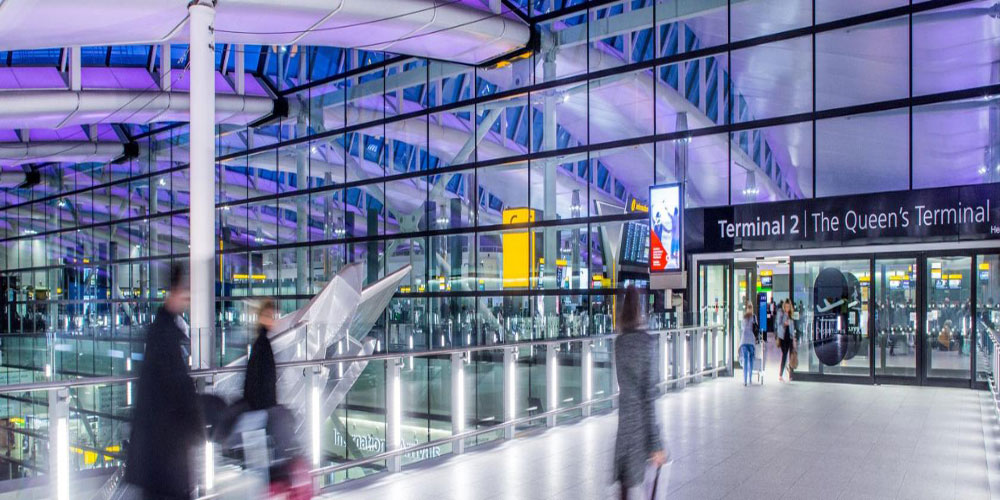London boasts more airports than any other city in Europe, just beaten to the global top spot by New York. Instead of one or two large airports conveniently located near transport links or city centres, there are a staggering six airports with ‘London’ in their names.
London’s many airports vary in size from bizarrely small to large multi-terminal airports serving passengers from all over the world. The largest of the six is Heathrow airport, boasting four terminals confusingly labelled 2 to 5. Next time you jet off on holiday, you might be left wondering why exactly there are so many airports surrounding the capital.
Following the First World War, it became evident to many in the UK that aviation would start playing a more significant role in society, not just militarily. Some speculated that flying would become akin to driving, with each individual owning their personal plane or helicopter, making the morning commute into London a way to bypass traffic.
This concept was taken so seriously that plans were actually proposed for an aerodrome, an early type of airport intended for small planes owned by pilots, to be constructed on top of King’s Cross station. The 1931 plans depict a wheel-like structure that would have accommodated six landing strips for personal planes to land at any given time.
However, both the aerodrome and the idea of flying commutes were abandoned when it became apparent that flight was being developed as a means of mass transit rather than targeting individual vehicles. The concept shifted from personalised travel, where you need to own your own plane to fly, to now simply purchasing a ticket, reports MyLondon.
Surprisingly, London’s first official international airport was opened in Croydon in 1920. Converted from an aerodrome into a landing zone for commercial flights, it was the capital’s first terminal designed for passengers rather than pilots.
The airport found itself at the centre of Britain’s civil aviation boom in the interwar period, which made Croydon the new gateway to the British empire for lucky travellers with the resources to visit territories overseas. The conversion of the aerodrome led to many others following suit, with multiple being converted across the capital. An even bigger boom in airports came during the Second World War, with aviation once again having a crucial role in the war effort.
The Second World War saw a huge advance in aviation technology in a short timespan, with planes getting bigger and more powerful. This meant that by the end of the war, a lot of London’s airports were no longer suitable as the noise of the bigger jet engines was too loud for the surrounding residents, and the planes needed longer runways.
This led to a number of converted aerodromes closing down as they weren’t suitable for commercial flights, including Croydon Airport in 1959. Instead, it was decided that much bigger, higher capacity airports could be built on the outskirts of London to serve commercial passengers.
An area to the West of the capital was chosen as somewhere far enough from heavily populated areas, while also being close enough to reach from London. There in 1945, Heathrow was born, originally called London Airport.
Gatwick followed in 1958, with RAF Gatwick being opened as Gatwick Airport to support Heathrow’s capacity to take in passengers. However, when the 1960s saw a package holiday boom, many more ordinary people could afford to go on holiday – so more airports were needed.
As a result, a third commercial airport was planned for London. An area with good transport links and room for expansion was needed, but finding a location that was convenient for passengers without negatively impacting local residents was once again a challenge. Many Londoners hated the idea of having a noisy, smelly airport behind their back garden, which led to the decision to convert another RAF base, RAF Stansted. Stansted’s conversion was completed in 1990, just one year before Luton Airport.
Luton Airport had existed since 1938, but started serving passengers from London as well as its original home counties users. At the same time as Stansted’s conversion, London City airport was established on an old dock in Canary Wharf and opened its doors in 1987. This development meant that London had expanded from two to five airports in a short span of time.
Lastly, London Southend rebranded itself as a London airport in 2012 after the introduction of a rail line connecting it to London. It has the lowest passenger numbers each year, with around 2 million passengers using the airport pre-pandemic.
The reason why London requires so many airports compared to other cities is twofold. Firstly, the sheer number of people who use London every year either for flight transfers or visits. Secondly, Heathrow, London’s main airport, has faced expansion issues since its inception.
Heathrow is now surrounded by residential areas, leaving little room for further expansion beyond its current two runways – while plans for a third runway have been met with strong opposition. Without expansion, Heathrow alone cannot meet travel demands, giving Londoners a variety of airports to choose from for their summer holidays.
